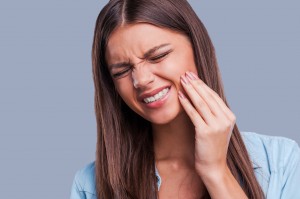 Although you may know that oral cancers most commonly occur due to extensive cigarette, tobacco, or alcohol use, you may not know that over one quarter of all oral cancers occur in those do not partake in these substance. Like other cancers, they can occur in nearly anyone, though those with a family history or cancers or HPV may be more likely to develop oral cancers. Knowing the warning signs of these diseases is critical, as early detection can truly save your life. Below, we’ve listed the most common ways to spot oral cancer, and changes you can make to reduce your risk.
Although you may know that oral cancers most commonly occur due to extensive cigarette, tobacco, or alcohol use, you may not know that over one quarter of all oral cancers occur in those do not partake in these substance. Like other cancers, they can occur in nearly anyone, though those with a family history or cancers or HPV may be more likely to develop oral cancers. Knowing the warning signs of these diseases is critical, as early detection can truly save your life. Below, we’ve listed the most common ways to spot oral cancer, and changes you can make to reduce your risk.
What To Look For
1. White or red splotches
Leukoplakia, or white patches in the mouth, and erythroplakia, red lesions in the mouth, are known as “pre-cancers”. They don’t necessarily indicate that you have the disease — in fact, white patches are often a symptom of a benign bacterial infection — but you should see your dentist regardless if they don’t disappear in two weeks, especially if you use tobacco products or excessively consume alcohol. If your dentist thinks it could be a sign of pre-cancer, you’ll have a biopsy to see if it can become cancerous.
2. Swollen tissues in the mouth and neck, loose teeth
A thickening of tissues in the cheeks, gums, under the tongue, or in the neck could be a sign of oral cancer, as can a persistent feeling that something is caught in your throat. Any lumps or swelling that does not go away after a week or two should be evaluated by your dentist, who will be able to determine if further evaluation is needed.
Loose teeth can also be an indication that oral cancer has developed or is developing, as can any change in the way your dentures fit.
3. Pain in the mouth, throat, or jaw
Pain is, unfortunately, a symptom of many different issues and often time isn’t cancer. However, persistent pain that does not go away and has no apparent cause can be a symptom of cancer, as is an difficulty with chewing or swallowing, speaking — especially unexplained hoarseness — or using your jaw.
Prevention Tips
1. Visit your dentist regularly
During your regularly scheduled dental checkups, your dentist will likely scan your mouth and neck for many of the symptoms above, especially any lumps or lesions that could be suspicious. These can be difficult to spot yourself until this disease has advanced quite far and, as we said, early detection is essential to optimal survival outcomes. So, if you maintain a regular schedule of dental visits, you’ll help ensure that anything suspicious gets caught and treated as soon as possible.
2. Eat a well-balanced diet
A diet rich in fruits and vegetables are essential to prevent cancers, as they contain high amounts of antioxidants to help combat cancer-causing free radicals.
3. Known your family history
If you have a history of cancer in your family, you may be more likely to develop oral or other types of cancer yourself. Be sure to visit both your dentist and your primary care physician regularly to ensure that any pre-cancerous signs are spotted and treated before they can develop into the full-blown disease.
4. Quit tobacco products and excessive drinking
Most oral cancers occur in those who use tobacco products or drink excessively. Complete abstinence from these products is the best way to ensure that you won’t develop oral cancer, but quitting tobacco and cutting back on alcohol consumption can go a long way in cutting down your risk as well.
Arming yourself with information about oral cancer is an important way to help prevent the disease from occurring, and can help you check for warning signs that can be treated early for optimal results. If you have any concerns at all about oral cancer, feel free to contact us and schedule a consultation — we’re here to keep you and your smile happy and healthy for years to come.







Leave a Reply